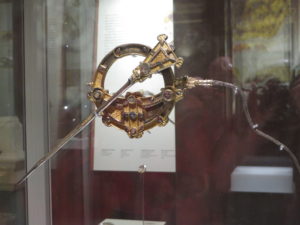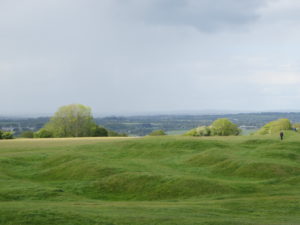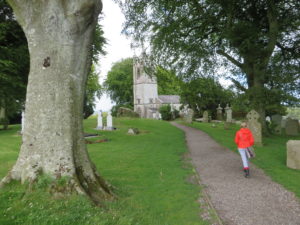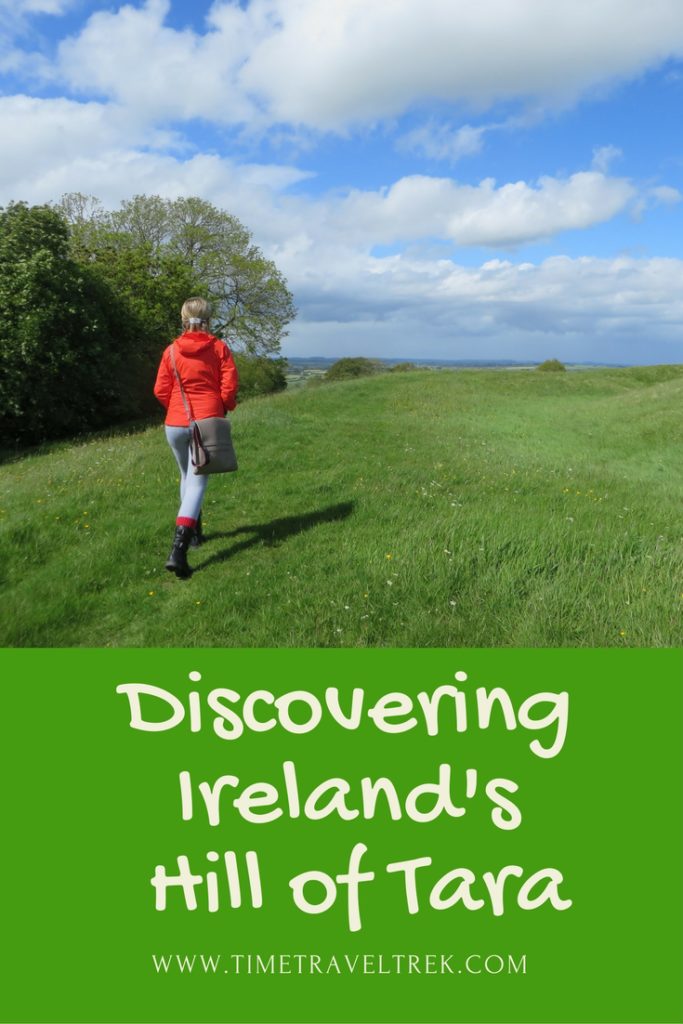Table of Contents
Ireland’s Hill of Tara, I don’t know why it was stuck in my brain.
Ireland’s Hill of Tara could have been mentioned in a book or covered in a documentary. All I know is that while visiting Dublin, I wanted to learn more. What better place to start than a museum dedicated to the country’s archaeology and history?
Treasures from Ireland’s Neolithic era to modern-day artifacts are well preserved in the carefully crafted collection at Ireland’s National Museum of Archaeology & History. I wasn’t overly interested in bog mummies or weaponry from the Viking era.
I went straight for the sparkle – the Tara Brooch.

The Tara Brooch is not old – in the sense of Ireland’s Neolithic past – but this 8th century, ring-shaped, cloak fastener is undeniably captivating.
Made of cast and gilded silver, the early medieval brooch has fine, filigreed gold panels and is studded with amber, enamel and coloured glass. It includes animal and abstract motifs.
I never realized that the Tara Brooch didn’t come from the Hill of Tara, located northwest of Dublin. It actually came from a place near the seashore at Bettystown in County Meath. Apparently a dealer attributed its source as being Tara in order to increase its value.
The brooch was a loss leader. Tara itself was the actual gem.
After spending time pouring over the display about the site, I knew we’d have to experience Tara for ourselves.
Disclosure: This post contains Affiliate Links.
What is the Hill of Tara?
It’s a graveyard – true. But the Hill of Tara in County Meath is much more than just that. This famous passage-tomb burial site was used for more than 1500 years.
It is where Ireland’s kings claimed their power.
It is said that this was where St. Patrick announced the arrival of Christianity in Ireland.
It is where Daniel O’Connell – the “Liberator” – rallied upwards of three-quarters of a million protestors in 1843 to seek freedom from Britain.
Tara of the Kings

Teamhair na Rig, or Tara of the Kings, includes a series of graves, tombs and temples.
It is a spiritual sanctuary.
The oldest visible monument is the passage tomb of Drumha na nGiall – the Mound of the Hostages. It dates back to the third millennium BC.

According to the informational pamphlet I picked up at the visitor centre, Tara’s power declined by the 6th century AD.
Paganism gave way to Christianity, “…and the title of ‘king of Tara’ became a symbolic prize for ambitious kings seeking to become the most powerful ruler on the island.”
Many historical and mythical figures are associated with Tara. The site was central to the creation of an Irish identity.
Today as you walk the grassy mounds along the low-rising Hill of Tara, surveying the countryside, the passion and politics of this low-lying hill and its man-made monuments are palpable.
If You Go:
The Hill of Tara is open from mid-May to mid-September, 10 am to 6 pm daily. Tara is located 12 km south of Navan, off the N3.
For more Irish travel adventures, check out these posts:
- Drawn to the Burren
- Ireland’s Skellig Michael: A Storied Past
- Ireland’s Trim Castle
- Getting to Know Guinness: Going to the Source in Dublin, Ireland
- The Stone Circles of Cork & Kerry, Ireland
- Ireland’s Brú na Bóinne
Affiliate Links:




Leave a Reply